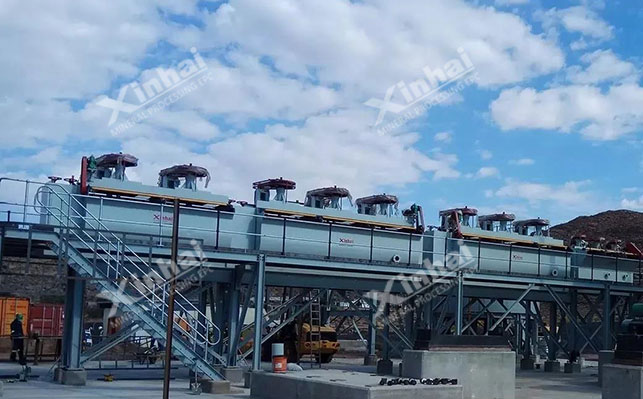
The quality of copper oxide is relatively low, mainly due to the serious mudification phenomenon and high oxidation rate. In terms of mineral processing, copper oxide ore is relatively difficult to be separated. At present, the main beneficiation method of copper oxide is flotation. According to the copper oxide ore The different properties can be divided into direct flotation method and sulfide flotation method.
Fatty acid flotation, amine flotation, chelating agent-neutral oil flotation, emulsion flotation, conventional sulfur flotation, hydrothermal sulfur flotation.

15311826613
Click to add WeChatThe direct flotation method of copper oxide ore is treated with capture agents, which mainly includes fatty acid flotation method , amine collector flotation method, Chelating agent-neutral oil flotation method and emulsion flotation method are often used for copper oxide ores with simple structure and relatively single properties.

The fatty acid flotation method uses fatty acids and their soaps as collectors, and also It is necessary to add gangue inhibitor water glass, phosphate and slurry regulator sodium carbonate. Fatty acids and soap collectors can flotate malachite and azurite very well. Fatty acids with different hydrocarbon chains are used to flotate malachite. As long as the hydrocarbon chain is long enough, its collection capacity will be very strong.
The fatty acid flotation method is mostly used for copper oxide minerals whose gangue is not carbonate. If the gangue contains a large amount of iron, manganese and other minerals, its flotation index will deteriorate, and the slime will also Causes fatty acids to become ineffective.
Amine flotation method, also known as cationic collector flotation method, is a non-ferrous metal oxide ore ( Copper, lead, zinc) is a commonly used flotation method that uses amines as collectors for flotation. It is widely used in copper mines such as malachite, azurite, and cuprosite.
Amine collectors are selective for copper oxide, because amines also have a collection effect on many gangues. Before sorting, they need to be deslimed in advance, but for argillaceous copper oxide , pre-desliming will lead to copper loss, so the premise of choosing amine flotation method is the selection and control of inhibitors in gangue minerals. At present, commonly used gangue inhibitors include seaweed powder, ligninate (or cellulose lignosulfonate) and polyacrylic acid.

This method refers to the use of a certain chelating agent and neutral oil Two reagents form a collector to complete flotation, and are mostly used for difficult-to-separate copper oxide (such as chrysocolla). It not only has good selectivity and collection effects, but also ensures high sorting indicators, reduces reagent consumption, and Chelating agents also have selective inhibitory effects.
However, the cost of chelating agents is relatively high. Currently used chelating agents include octyl-substituted basic dye malachite green, potassium octyl hydroxamate, benzotriazole and neutral oil emulsifiers, N-substituted imine diacetates, condensates of polyamines and organic halides, etc.
This flotation method mainly sulfurizes copper oxide minerals first, and then adds copper complexing agents to Create a stable lipophilic mineral surface, and then use neutral oil emulsion to cover the surface of the mineral to create a highly hydrophobic and floatable state, so that the mineral can firmly adhere to the bubbles to complete the selection.
There are two main types of copper oxide ore sulfide flotation methods: conventional sulfide flotation and hydrothermal sulfide flotation.
In this flotation method, copper oxide minerals are first sulfurized (using sodium sulfide or other sulfurizing agents), Then use high-grade xanthate collector to carry out flotation operation. During the vulcanization operation, the lower the pH value of the slurry, the sulfurization operation will be faster, and vulcanizing agents such as sodium sulfide are easier to vulcanize.

The sulfide flotation method is mainly used to treat copper oxide minerals, mainly copper carbonates, such as malachite, azurite and other minerals, or cuprite, but Chrysocolla needs special treatment first, otherwise the vulcanization effect will be poor or even impossible.
This flotation method extends the conventional sulfur flotation method and performs sulfurization operations under hot and pressure conditions. Let sulfur react chemically with copper oxide under hot pressure conditions to obtain stable and easy-to-select artificial copper sulfide minerals, and recover the same minerals by flotation of copper sulfide in warm water. This methodstrengthens the pretreatment-pre-sulfidation process of the ore, but this process has extremely high temperature requirements, high fuel consumption, and long sulfurization time.